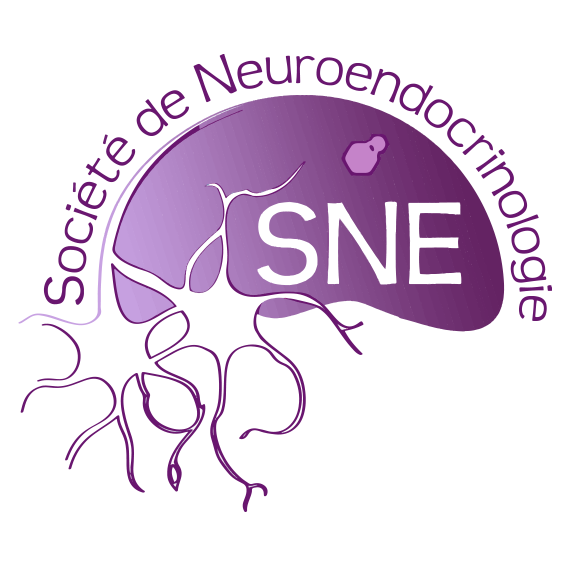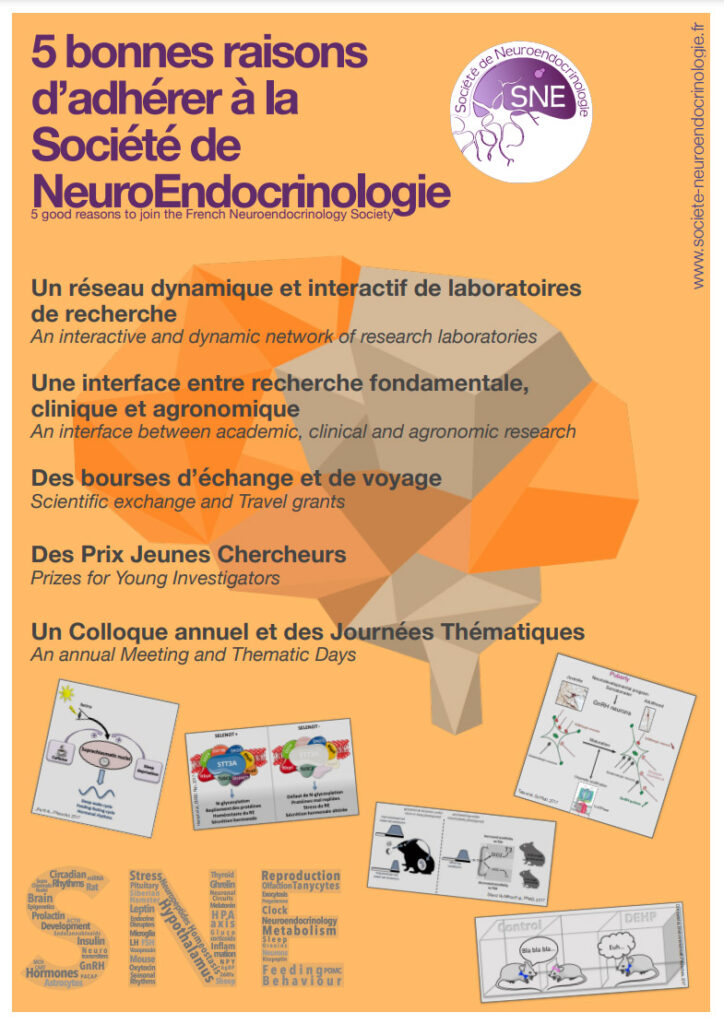Gliogenèse hypothalamique et contrôle de la fonction de reproduction
Résumé
La reproduction des espèces est orchestrée au niveau central par des populations neuronales localisées dans l’hypothalamus. La région préoptique en particulier contient les corps cellulaires des neurones à Gonadotrophin Releasing Hormone (GnRH), qui contrôlent la fertilité en stimulant la production des gamètes et des hormones sexuelles. Cette région hypothalamique contient également des circuits neuronaux qui organisent les différentes composantes du comportement maternel, permettant ainsi d’assurer la survie de la descendance. L’activité de ces réseaux neuronaux est finement régulée par des influences neuronales et gliales, et est profondément modifiée au cours de la vie de l’individu. Les modifications d’activité des circuits neuronaux s’opèrent grâce à de multiples mécanismes – dits de plasticité – impliquant notamment des variations d’expression génique, des remaniements structuraux des cellules voire l’ajout de nouvelles cellules. Cette dernière forme de plasticité « cellulaire » s’observe au cours de la période postnatale, dans un contexte développemental, puis se poursuit à l’âge adulte dans certaines régions cérébrales, dont l’hypothalamus.Mes recherches doctorales avaient pour but d’explorer le rôle de la plasticité cellulaire dans la région préoptique de l’hypothalamus dans le contrôle de la fonction de reproduction chez la rate. Pour cela, nous avons choisi deux périodes de la vie associées à de profondes modifications dans l’activité des réseaux neuronaux : la période postnatale, pendant laquelle se produit la maturation des neurones à GnRH permettant la survenue de la puberté, et la gestation, pendant laquelle des modifications s’opèrent dans les réseaux neuronaux contrôlant les adaptations physiologiques de la gestation, la parturition puis la mise en place du comportement maternel. Nous avons abordé cette question au moyen d’approches de neuroanatomie, de biologie cellulaire, moléculaire, d’électrophysiologie et d’analyses comportementales.Nous avons mis en évidence un mécanisme inédit d’interactions entre neurones à GnRH et cellules gliales pendant la période infantile. En effet, les neurones à GnRH sont capables de recruter des progéniteurs d’astrocytes dans leur entourage immédiat au moyen de la signalisation PGD2/DP1. La mise en place de cette couverture astrocytaire est importante pour l’intégration fonctionnelle des neurones à GnRH au sein de leur circuit, en favorisant la formation de synapses glutamatergiques et est nécessaire à la maturation sexuelle et la survenue correcte de la puberté. De façon intéressante, une exposition postnatale au perturbateur endocrinien bisphenol-A, qui altère la maturation du système GnRH, perturbe ce processus de recrutement glial par les neurones à GnRH.Dans un second temps, j’ai montré que la néogenèse dans la région préoptique de l’hypothalamus persiste au-delà de la puberté. Cette activité concerne essentiellement le lignage oligodendroglial, avec une prolifération de précurseurs d’oligodendrocytes (OPC) dont certains se différencient en oligodendrocytes matures. La prolifération des OPC varie au cours du cycle oestral, avec un pic en diestrus 2, et les cellules nouvellement formées survivent préférentiellement en cas de gestation, et ce sélectivement dans l’aire préoptique mediane. Enfin, j’ai démontré que la formation de ces nouvelles cellules oligodendrogliales, souvent morphologiquement associées à des corps cellulaires neuronaux, est nécessaire à l’expression optimale du comportement maternel.L’ensemble de ces résultats montre l’importance de la gliogenèse dans la région préoptique de l’hypothalamus tout au long de la vie chez la rate. Des travaux ultérieurs seront indispensables pour mieux comprendre les mécanismes régulant cette gliogenèse et leur impact sur l’activité des circuits neuronaux hypothalamiques.
Abstract
Species reproduction is centrally orchestrated by neuronal populations located in the hypothalamus. The preoptic region in particular contains the Gonadotrophin Releasing Hormone (GnRH) neuron cell bodies, which control fertility by stimulating the production of gametes and sex hormones. This hypothalamic region also contains neural circuits that organize the different components of maternal behavior, thus ensuring the survival of the offspring. The activity of these neural networks is finely regulated by neuronal and glial influences and is profoundly modified during the life of the individual. Changes in the activity of neuronal circuits occur through multiple mechanisms – known as plasticity – involving variations in gene expression, structural remodeling of cells and even the addition of new cells. This last form of ‘cellular’ plasticity is observed during the postnatal period, in a developmental context, and continues into adulthood in certain brain regions, including the hypothalamus.The aim of my PhD research was to explore the role of cellular plasticity in the preoptic region of the hypothalamus in the control of reproductive function in the rat. For this purpose, we chose two periods of life associated with profound changes in the activity of neural networks: the postnatal period, during which maturation of GnRH neurons occurs allowing the onset of puberty, and gestation, during which changes take place in the neural networks controlling the physiological adaptations of gestation, parturition and then the establishment of maternal behavior. We have addressed this question using neuroanatomical, cellular and molecular biology, electrophysiology and behavioral analysis approaches.We uncovered a novel mechanism of interactions between GnRH neurons and glial cells during the infantile period. Indeed, GnRH neurons are able to recruit astrocyte progenitors from their immediate surroundings using the PGD2/DP1 signaling. The establishment of this astrocytic coverage is important for the functional integration of GnRH neurons within their circuitry, promoting the formation of glutamatergic synapses and is necessary for sexual maturation and the timely onset of puberty. Interestingly, postnatal exposure to the endocrine disruptor bisphenol-A, which impairs the maturation of the GnRH system, disrupts this process of glial recruitment by GnRH neurons.In a second step, I showed that cell neogenesis in the preoptic region of the hypothalamus persists beyond puberty. This activity mainly concerns the oligodendroglial lineage, with a proliferation of oligodendrocyte precursor cells (OPCs), some of which differentiate into mature oligodendrocytes. OPC proliferation varies across the estrous cycle, with a peak in diestrus 2, and the newborn cells preferentially survive if a pregnancy occurs, an effect selectively seen in the medial preoptic area. Finally, I demonstrated that the formation ofthese new oligodendroglial cells, often morphologically associated with neuronal cell bodies, is necessary for the optimal expression of maternal behavior.Taken together, these results demonstrate the importance of gliogenesis in the preoptic region of the hypothalamus throughout life in the rat. Further work is required to better understand the mechanisms regulating this gliogenesis and their impact on the activity of hypothalamic neuronal circuits.
Présentée le 14 décembre 2021
Laboratoire où a été préparée la thèse : Lille Neurosciences & Cognition – U 1172
Sous la direction de Ariane Sharif

